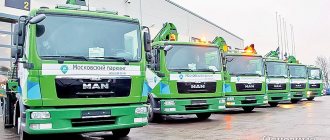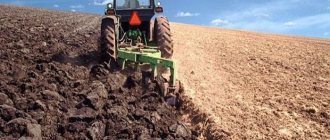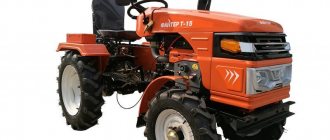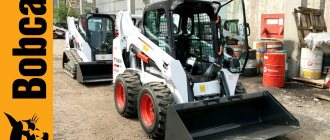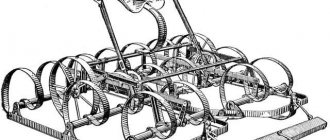Owners of private houses and land plots are well aware of how much time and effort is spent in order to keep their garden or vegetable garden in order. When growing vegetables and fruits, they are interested in getting a good harvest. It is possible to significantly ease the task of gardeners with the help of small-sized agricultural machinery.
Inter-row cultivators are widely used for loosening and weeding the soil. Today, the agricultural machinery market offers a wide variety of models, differing in power, size and engine type.
Kinds
Inter-row cultivators are necessary for high-quality loosening of the soil.
In addition to its main purpose, this garden tool can be used to get rid of weeds, cultivate the ground between trees and shrubs, cut beds, hill up and dig up potatoes.
There is a conditional division of cultivators into categories. Devices:
- Small ones . These units are small in size and low in power. Their weight is on average 30 kg. The maximum depth of soil loosening is up to 18 cm. The advantage of this type of cultivator is good maneuverability, which allows you to cultivate narrow areas in the beds. Small cultivators are an economical option for summer residents because they are not expensive. But performing large volumes of work can lead to equipment failure. Therefore, such a cultivator is not suitable for cultivating large areas of land.
- Average _ They belong to the category of semi-professional agricultural technology. This calculator weighs about 60 - 75 kg. With its help, you can loosen the soil to a depth of 30 cm with a working width of 90 cm. These cultivators are widely used for plowing large areas.
- Heavy . These are professional rippers designed to perform large volumes of work. Such units can withstand continuous load. Designed for areas from 1 to 3 hectares. The cost of heavy equipment is much higher than the two initial options. However, it pays off with the quality of the work performed.
Expert opinion
Kuznetsov Vasily Stepanovich
The choice of inter-row cultivator should be made based not only on its dimensions and engine power, but also on its capabilities.
For small garden areas, small cultivators are more suitable. They can be used to loosen the soil in beds and flower beds. In most cases, such models operate from the network. They are convenient and easy to use.
Powerful cultivators are used to cultivate virgin lands and carry out work when planting potatoes. They are needed where low-power equipment cannot cope.
Heavy units operate on the basis of a gasoline engine, as they are used where there is no access to power.
For working in the fields, powerful units with a soil loosening depth of more than 35 cm and a good working width are most suitable. They allow you to cultivate the land not only efficiently, but also quickly.
Reviews
Ivan, 38 years old
We are beginning farmers with a small plot of land. We came to the company to buy an attachment for cultivating the soil - a cultivator costs several tens of thousands of rubles. We bought a profile, angles and sheet iron at a recycled metal shop; we found a rod and strip at home. In three days, we welded a ripper for the T 25 according to the drawings, and the money was mere pennies. We arrived at the field, set the depth of the cutters and the width of the rows - the machine works! And the soil becomes like fluff, and the weeds are uprooted! Comfortable!
Nikolay, 27 years old
We have half a hectare of potatoes. We carry out all field work with a walk-behind tractor - in the spring we make even furrows and plant potatoes in them. Then, using disc cutters, we form a ridge, burying the tubers. After twenty days, we go through the rows with a hiller and hill up the potatoes. And the rows are cleared of weeds, the soil is loosened and the potatoes are hilled. In the fall, we dig it up with a potato digger and also with a walk-behind tractor. Everything is done quickly and with minimal labor! And what a soil after cultivation with cutters and hillers - crumbly and soft!
Classification by engine type
Cultivators are divided into categories depending on the type of engine, since the drive of the device is of no small importance.
Inter-row rippers are:
- Gasoline . Autonomous powerful and heavy devices. They are suitable for processing medium to large areas. These units are equipped with a chain drive, allowing you to attach awnings. Such a cultivator will perform several functions: plowing, hilling, planting and digging. If a gasoline ripper is equipped with a power take-off shaft, then it can also be used to mow, sow, water crops and even remove snow. Movable dynamic canopies are installed on walk-behind tractors or powerful gasoline models.
- Electric . These devices have a worm gearbox, so they are not suitable for attachments. Their main advantages are ease and simplicity of control. Electric units are the best option for greenhouses, greenhouses, flower greenhouses and small beds. They are not suitable for plowing remote areas of land with a large area. They also cannot be used to cultivate hard ground.
- Rechargeable . Universal cultivators powered by a battery. Autonomous and not connected to power sources by cable. Just like electric ones, they are used for home areas and greenhouses. They are easy to use, do not emit emissions and operate silently.
Among the many models, it is possible to choose the most suitable one for your garden.
What type of engine is installed on your inter-row cultivator?
GasolineElectric
Advantages of using devices
There are several advantages of using a cultivator on a summer cottage:
- effective loosening of the soil for a good supply of oxygen to the soil;
- removal of weeds along with the roots, which largely ensures the saturation of the plant crop with useful substances;
- facilitating the introduction of mineral complexes or organic fertilizers into the soil.
Depending on the type of inter-row processing, the device can be different - milling or claw. Available in tractor version.
Attention!
In order not to harm the crop during processing, before planting, consider the row spacing
It is important that each furrow or row of holes is perfectly level
Popular models
Iron Angel GT45
The machine operates in autonomous mode, has a 6 horsepower gasoline engine, combined with a worm gearbox.
The single-cylinder engine of the Dutch brand with a cooling system is economical and can withstand heavy loads.
The cultivator is equipped with prefabricated cutters that can go deep to a depth of 30 cm. They are necessary to destroy the root system of weeds. The loosening width can be adjusted within the range of 24-38 cm. The weight of the cultivator is 33 kg, which allows it to be classified as a light, maneuverable machine.
The device has a comfortable handle with controls that can be adjusted according to height. Suitable for processing black soil, sandy and clay soil.
Forte ICD-25 Lux
One of the best Chinese models running on gasoline engines.
Despite its low weight, only 15 kg, the device is highly durable, economical and provides good performance. It is lightweight and easy to use.
The unit is equipped with a screw cutter and has a 2.5 horsepower engine. The soil grip during passage is 30 cm. Suitable for cultivating small areas, while doing a good job of loosening hard soil.
Iron Angel GT 09
A heavy Dutch-made unit equipped with a powerful engine - 7.5 horsepower. There is a multi-level gearbox that allows you to switch between rear and forward speeds. The motor cultivator is designed for loosening hard soil in large areas.
Its weight is about 100 kg. It is suitable for attaching attachments that allow for increased functionality, including weeding, harrowing and preparing the soil for sowing, planting, hilling and digging up potatoes and other root crops.
Optimal for sandy soils, black soils and clay soils. The depth of soil cultivation using the Iron Angel cultivator can vary from 15 to 30 cm with a maximum passage width of 1 m. The cultivator comes with pneumatic wheels, so you can attach a trailer to it.
Hyundai T1820E
Korean electric cultivator Hyundai made of impact-resistant plastic. Lightweight machine weighing 12 kg. with 1.5 kW Hyundai ECO electric motor (suitable for weak network).
The cultivator is easy to transport and operate, designed for soft soil prepared for planting.
The width of the passage can be adjusted from 23 to 40 cm, which is convenient for processing hard-to-reach places on the site. The model has a solid handle that allows you to hold the machine in a horizontal and vertical position, as well as change it. Suitable for greenhouses, conservatories and summer cottages.
Könner & Söhnen 2000 TE
Electric cultivator made in Germany with a 2 kW asynchronous high-power motor. The weight of the device is 30 kg.
It has a chain gear, not a worm type, which indicates its technology.
The unit is equipped with forged metal blades and steering handles with inclusion.
The soil cultivation depth is 25 cm with a working width of 50 cm in one pass.
Einhell GE-CR 30 LI
A German device powered by a lithium-ion battery.
The machine is autonomous, weighs only 11.7 kg, and therefore belongs to the category of lightweight agricultural machinery.
It has a small passage width of 30 cm, which is very convenient for loosening and weeding rows.
The depth of immersion in the soil is 20 cm. The cultivator is designed to work on soft soil.
Homemade cultivator for processing
Of course, it is easier to buy a cultivator for inter-row tillage. But not everyone has this opportunity. In this case, you can make the device yourself. In principle, if you follow the instructions, there is nothing difficult about it. The manufacturing process takes several stages:
- You need to find 3 metal disks or rings with a diameter of 10, 20 and 30 cm. If you use rings, the design will be lighter.
- Select a pipe with a diameter of 25 mm. Place the disks on it (from largest to smallest) at a distance of 15 cm from each other.
- Next, the spikes are welded. Usually metal rods are used for this. The unit will need about 40 spikes about 12 cm in length. The smaller disk has 5 spikes, the medium one - 10, the large one - 15. The rest are distributed onto the pipe.
- Using abutments and bushings, the discs are secured to the frame at an angle of 45 degrees.
- Wheels are mounted. A bracket is made from a metal strip 7 cm wide and 4 mm thick . To secure the guide wheels, holes are made in it. For a cultivator, two wheels are enough.
Additional items
Some cultivators come with a set of attachments necessary for various types of work. Each nozzle has a specific purpose. With their help, you can hill up root crops, cut and weed beds, dig trenches, etc.
The attachments that are recommended to be purchased include:
- plows, beamers;
- rake;
- harrow;
- garden skating rink;
- hiller;
- potato planter;
- flat cutters;
- mower;
- shovels;
- snow blower;
- trailer.
Having chosen the necessary auxiliary elements for your arsenal, with the help of a cultivator you can not only prepare the soil on the site, but also cultivate it efficiently in order to quickly reap a good harvest.
Loosening potato rows using a walk-behind tractor
To use a walk-behind tractor for loosening the soil, potatoes are initially planted according to the appropriate parameters:
- distance between rows - 70 cm;
- the longest rows;
- There must be space at the edges to turn the unit.
Loosening is combined with the first hilling; it is carried out 15 days after planting the potatoes. For this purpose, a hiller plow or disk attachments are used. In order for the walk-behind tractor to better engage the ground, it is recommended to replace conventional wheels with metal ones with lugs.
If loosening is carried out by a hiller, a universal hitch is hung on the walk-behind tractor, installing one or more hiller plows on it.
When using disk attachments, you need to adjust the angle of rotation and the distance between them. The distance can vary from 40 to 70 cm, it all depends on the type of potato and the height of the bushes. The angle of rotation depends on the density of the soil.
See also
How to plant potatoes correctly to get a good harvest? Read
Tips for choosing
According to experienced farmers, the choice of cultivator should be approached thoroughly. First you need to decide how much work the equipment should be designed for. For larger areas you will need a more powerful unit. It is also recommended to know the type of soil to determine at what depth the soil should be tilled.
You should definitely familiarize yourself with the technical characteristics of the device, and if necessary, obtain qualified advice from the seller. It is important to have an idea of engine types and cultivation widths. For example, a gasoline engine is noisy, has a lot of weight, and produces emissions. Electric cultivators are more mobile, lighter, more convenient to use and more environmentally friendly.
Necessary materials
To ensure that the work on creating a cultivator is as efficient as possible, tools are used.
- Welding machine with electrodes.
- You can’t do without an electric drill with metal drills and a gas torch.
- Have a tool for cutting pipe threads on hand.
- A set of plumbing tools along with a grinder will be useful, which will help clean up the welds.
There are several options for making a homemade cultivator online. You can use any, taking into account your wishes. If you make it correctly, according to all recommendations, it will serve the potato grower for a long time.
The cultivator will be made of a metal sheet, the thickness of which should not exceed 4 mm; the average sheet size should be 1 thousand mm X 500 mm. You will also have to find a water and gas pipe, which is divided into two parts (one longer, the second smaller). You will need to use two steel rods of different diameters along with wing nuts and a solid cylinder. The set of necessary materials also includes an equal crosspiece with an internal thread, and four cotter pins.
Types of cultivators:
- In terms of purpose, they distinguish: row-crop tools and steam tools. The latter is used before planting, and the former is suitable for hilling crops, removing weeds and loosening the soil.
- In terms of working tools, we can distinguish: a milling machine or a disk machine. There are options with pointed shares and an option for cultivating the soil at depth (chisel). Gardeners also use a plowshare tool to process plants.
- In terms of the type of traction, a distinction is made between a mounted or trailed cultivator. Many gardeners still use manual equipment, while gasoline and even electric machines are available on the market.
- Considering the category of weight and power, there are light, heavy and medium cultivators. Thanks to new technologies, an effective ultra-light model was created.
- When referring to the category of number of rows processed, the cultivator can be single-row or multi-row.
How to properly cultivate
The soil on the site must be cultivated correctly
It is important to observe all the features of this land cultivation technique. Let's look step by step at how to do this correctly using the example of a walk-behind tractor, without making mistakes.
The first step is to prepare the unit for further work. It is required to install a suitable set of cutters on both sides. Typically, one set contains from 6 to 12 knives. Such a number of parts and their location make it possible to achieve excellent results.
Then install the coulter. This is a strip that is equipped with vertical holes. With them, you can adjust the depth level of the cutters as you till the ground. To independently regulate the depth of cultivation, you can attach the coulter to the shackle in various ways:
- if you need to make the depth greater, the opener will need to be lowered lower and attached to the shackle, passing through the holes located on top;
- if you want to reduce the depth, the opener needs to be raised upward and attached to the shackle through the lower holes.
Having completed all the preparatory stages, you can proceed directly to the soil cultivation process. Keep in mind that the speed at which you cultivate the soil affects the overall quality of work.
There are 2 main gears - high and low. When carrying out the cultivation procedure, you need to ensure that the walk-behind tractor operates at high speeds. Therefore, you should choose a suitable gear so that the rotation speed of the cutters is impressive.
A correctly set gear will significantly reduce the load on the engine present in the design of the unit, and will also increase the quality of loosening the soil. Having completed the cultivation work on the first strip, it is worth checking at what depth the processing was carried out. If the indicator is satisfactory, you can work longer. Remember not to put too much pressure on the steering wheel of the device when lowering it down. There is also no need to push the walk-behind tractor, because this will result in it “burrowing” into the ground.
How to work
After the cutters are installed, start the walk-behind tractor. At first speed, right on the cutters, we approach the beginning of the section. If there is only one speed for moving forward, then we do it at the lowest engine speeds. To operate a motor cultivator with a cutter, select the speed as high as possible. We turn on the second speed and, having set the engine speed to maximum, engage the clutch.
Use the coulter to set the desired cultivation depth. First, put it on the second division from the top. The shorter the part of the opener facing the surface, the finer the processing. With its help, we create a load and slow down the forward movement of the equipment. Unable to move forward, the cultivator buries itself deeper with the cutters. The opener is the same anchor. When you have walked the strip from the beginning of the section to the end, then if the section is small, you can turn on the back one and return.
If the area is large, then it is more convenient to move in a circle. If it is possible to turn the steering wheel to the side, it is advisable to turn it. Then the operator will walk on solid ground and not trample the already cultivated soil.
It happens that the soil is heavy and the cultivator is light. Then you need to hang additional weight in the area of the cutters. Select the load in separate “pancakes”, 6-7 kg each.
Cultivation is carried out with a slight overlap of the treated area. We make the second pass so that one of the cutters goes along half of the processed strip. We focus on the depression that the opener leaves behind. Thus, all the soil will be processed twice. This way we will achieve uniform soil treatment throughout the entire area.
When cultivating row spacing, we install protective guide discs on the edges of the assembly. They will not allow the plant roots to be cut and will not allow the unit to deviate from the specified trajectory.
Preparing the walk-behind tractor for cultivating the site
Step one. Installation of cutters
Photo 2
To cultivate the soil, instead of transport wheels, you must install a set of cutters on the walk-behind tractor on the left and right sides, as shown in photo 2 (cutters are installed on the right side). One set of cutters includes eight knives. This number and arrangement of knives on the axis gives the most effective result of tillage.
Photo 3
Please note that when installing knives, the cutting part should be directed forward, in the direction of movement of the walk-behind tractor. Please note that the working part of the knife should not be sharp, since in this case the walk-behind tractor will not move forward, but will constantly bury itself in the ground, since the cutters will not loosen the ground, ensuring engagement with the soil, but will simply cut it
Step two. Installing the opener
Photo 4
Photo 4 shows how an earring is installed on the walk-behind tractor, to which the opener is attached.
Photo 5
Photo 5 shows the opener. What is it and what is it for? The coulter is a bar with vertically located holes, with the help of which we can adjust the depth of the tillers of the walk-behind tractor during the cultivation of the land.
Photo 6We install the opener into the shackle and fasten it using a bushing and cotter pins into the second hole (counting from the bottom of the opener). When installing the coulter in this way, the depth of the tillers of the walk-behind tractor into the soil will be approximately 20 cm. This depth is quite sufficient for high-quality tillage of the soil for subsequent planting of cultivated plants on the land plot.
To change the depth of tillage, the coulter can be attached to the shackle as follows:
- To increase the depth of tillage, we lower the coulter down and attach it to the shackle through the upper holes.
- To reduce the depth of tillage, raise the coulter upward and attach it to the shackle through the holes located below.
Photo 7
The cutters and coulter are installed and the walk-behind tractor is ready for work. To determine the quality of adjustment of the depth of the cutters, it is necessary to perform a control run of the walk-behind tractor over the land plot and make sure that the walk-behind tractor operates without load during cultivation and the depth of tillage meets our requirements.
Design and principle of operation
The potato cultivator has a complex design, which consists of several components:
- Special cutter for tillage. Its purpose is to loosen the soil, destroy weeds, mix the soil and achieve other tasks. Increasing the width of the cutter allows you to increase labor productivity.
- The device is driven by an internal combustion engine. On the equipment in question, gasoline and diesel units of two-stroke and four-stroke types are installed. A cultivator for processing potatoes is characterized by the power of the installed motor.
- To increase the controllability of the manual cultivator, wheels are installed. They can have different sizes.
- All elements are fastened and combined using a metal frame.
- The gearbox is designed to change the transmitted force from the engine to the actuator.
The principle of operation of the cultivator is to transmit rotation from the engine to the installed cutter. By redistributing the load, it is possible to control the device, rotate and change the cutting depth of the cutter.
Sharpening
Experienced gardeners understand that from time to time they should sharpen the flat cutter for the walk-behind tractor.
First, sharpening takes place on a machine, and then using a file or whetstone. It is done only on the outside, and the burrs are removed from the inside.
Expert opinion Kulikov Vladimir Sergeevich
If the flat cutter was purchased and not made independently, then a machine is not required. The original flat cutter only needs sharpening from time to time.
A flat cutter that you created yourself can be used for heavy and light walk-behind tractors. It is suitable for Neva brand units and other foreign and domestic vehicles. The main thing is to follow certain rules when creating and using flat cutters.
- How to choose the best potato digger for a walk-behind tractor: their types, operating features, rating and review of 5 popular models, their pros and cons, useful tips and recommendations
- Review of attachments for a cultivator: main types and scope of their application, which of them are compatible and which are not

